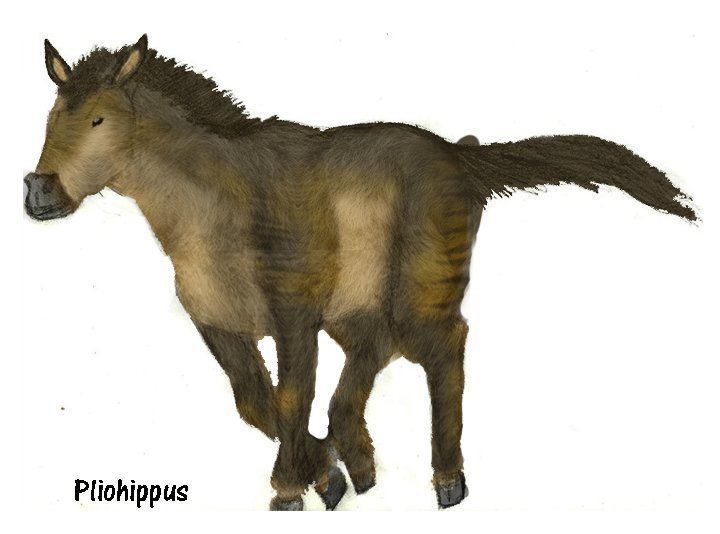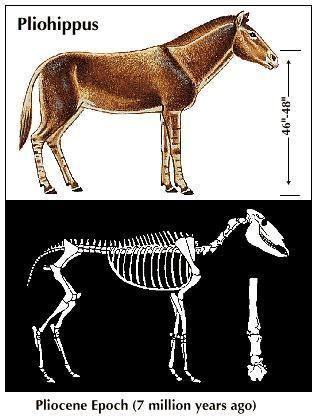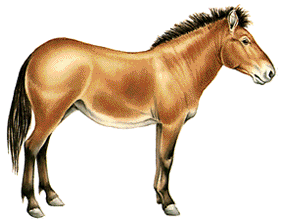Scientific name Pliohippus Higher classification Horses Order Odd-toed ungulate | Rank Genus | |
 | ||
Similar Merychippus, Mesohippus, Miohippus, Hyracotherium, Eohippus | ||
Pliohippus (Greek πλεῖον (pleion, "more") and ἵππος (ippos, "horse")) is an extinct genus of Equidae, the "horse family". Pliohippus arose in the middle Miocene, around 15 million years ago. It was similar in appearance to Equus, but had two long extra toes on both sides of the hoof, externally barely visible as callused stubs. The long and slim limbs of Pliohippus reveal a quick-footed steppe animal.

Until recently, because of its many anatomical similarities, Pliohippus was believed to be the ancestor of the present-day horse and its relatives in Equus. Although Pliohippus clearly is an equid and thus related to Equus, its skull had deep facial fossae, a feature not found in any member of Equus. Additionally, its teeth were strongly curved, unlike the very straight teeth of modern horses. Consequently, it is unlikely to be the ancestor of the modern horse; instead, it is likely to be the ancestor of Astrohippus. Pliohippus stood approximately 1.25 metres, similar to the modern horse. Also like the modern horse, Pliohippus was a grazer that fed of steppe grasses of the North American plains it inhabited.

Fossils of Pliohippus have been found at many late Miocene localities in Colorado, the Great Plains (Nebraska and the Dakotas) and also Canada. Pliohippus has been found beside Neohipparion.


